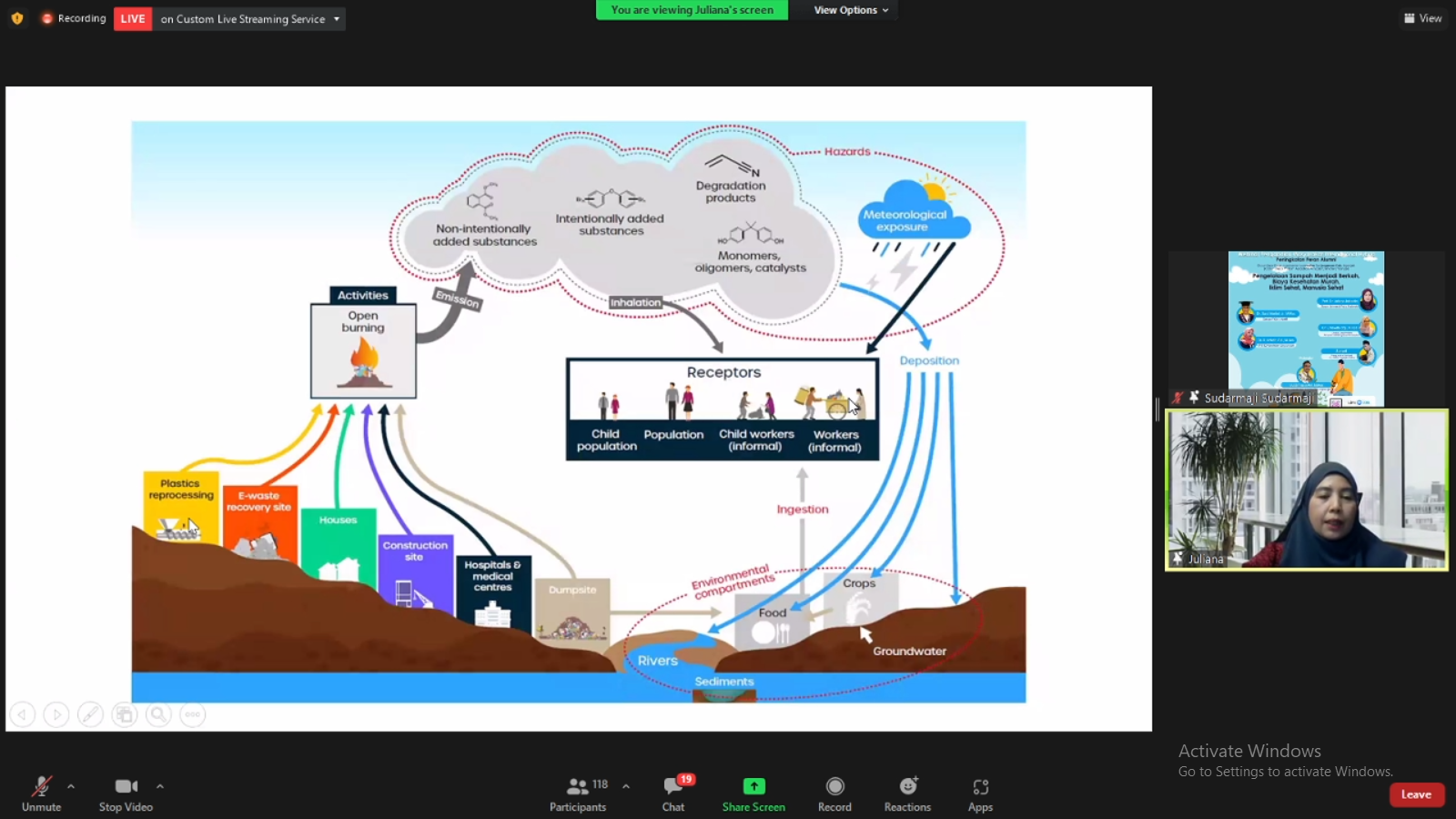UNAIR NEWS – According to data from the World Bank in recent years, world waste production is projected to increase significantly and reach 2.2 billion tons by 2025. It is also estimated that almost 41% of the waste in the world is burned openly (open burning).
Open waste burning is the process of destroying waste by burning, usually at low temperatures, in a non-standardized and uncontrolled manner. The incomplete burning process has many negative impacts on the environment and humans.
In an international webinar held by the Faculty of Public Health (FKM) UNAIR on Sunday, January 16, 2022, Prof. Dr. Juliana Jalaludin was present as a speaker. The lecturer of the Faculty of Medicine and Health Sciences, Universiti Putra Malaysia, said that open burning is done mostly because it is easy and cheap, but it is actually dangerous for the environment.
“Open waste burning can release various toxic pollutants into the air, such as large amounts of greenhouse gasses into the atmosphere. Besides, it can also exacerbate soil and water pollution,” she said.
The resulting compounds include carbon dioxide, methane, and particulate matter that can cause severe cases of respiratory illness. Without going through the incineration process, open burning can also produce polycyclic aromatic hydrocarbons, dioxins, and furans which are carcinogenic, causing various diseases.
“There are approximately 30 hazardous compounds that are persistent in the environment. As a result, they can be absorbed by humans and damage our brain, hormones, and even fetuses,” she continued.
Dr. Juliana explained, in general, there are four routes of exposure to toxicants in the air. The routes can be through inhalation, ingestion, contact with objects exposed to toxicants, or the transplacental one.
“Toxic compounds resulting from burning will be released into the atmosphere and then inhaled directly by humans or enter our body through food. The most dangerous compound can even contaminate the fetus through pregnant women,” she said.
At the end of her presentation, Dr. Juliana explained that 3R approach is the most appropriate method to reduce waste because it can reduce waste significantly without causing negative impacts.
“Therefore, we need to increase public awareness on the dangers of open waste burning so that they are able to use objects that have the potential to become waste wisely,” she concluded. (*)
Author: Ivan Syahrial Abidin
Editor: Khefti Al Mawalia





